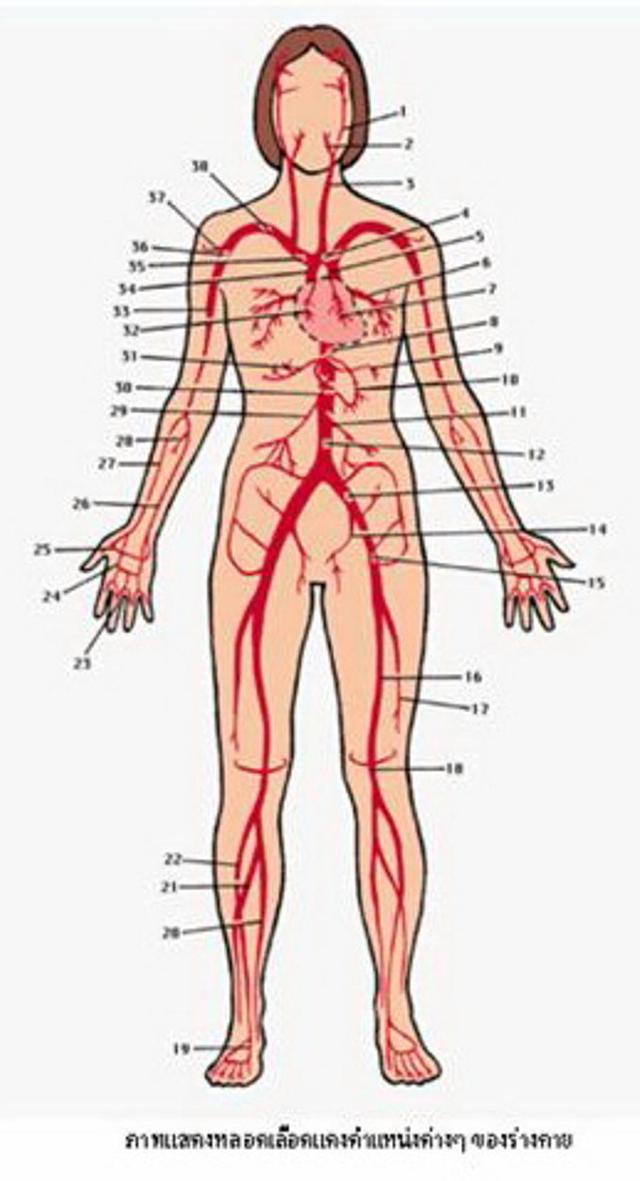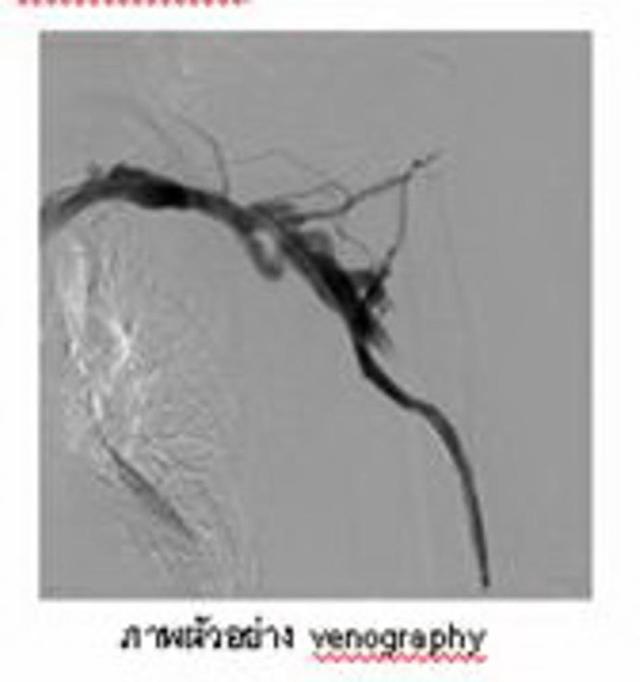ภาษาอังกฤษและความหมายที่ควรรู้ในงานรังสีวิทยาหลอดเลือด ตอนที่ 1
ภาษาอังกฤษและความหมายที่ควรรู้ในงานรังสีวิทยาหลอดเลือด ตอนที่ 1
Common meaning of word in Angiography world : part I
พงษ์ศักดิ์ แสงครุฑ วท.บ.รังสีเทคนิค
เอนก สุวรรณบัณฑิต วท.บ.รังสีเทคนิค
วิชุดา สิริเมธาธโนปกรณ์ วท.บ.รังสีเทคนิค
ภาควิชารังสีวิททยา คณะแพทยศาสตรศิริราชพยาบาล มหาวิทยาลัยมหิดล
พงษ์ศักดิ์ แสงครุฑ, เอนก สุวรรณบัณฑิต, วิชุดา สิริเมธาธโนปกรณ์. ภาษาอังกฤษและความหมายที่ควรรู้ในงานรังสีวิทยาหลอดเลือด ตอนที่ 1. วารสารชมรมรังสีเทคนิคและพยาบาลเฉพาะทางรังสีวิทยาหลอดเลือดและรังสีร่วมรักษาไทย, 2552; 3(1): 60-6
ภาษาที่ใช้กันบ่อยของงานรังสีวิทยาหลอดเลือดและรังสีร่วมรักษานั้นเป็นการใช้ในเชิงทับศัพท์และทำให้เกิดความคลาดเคลื่อนในเชิงความหมายแท้ของคำนั้น การประมวลศัพท์จึงเป็นสิ่งที่ได้รับการกล่าวถึงว่ามีความสำคัญและจำเป็น ซึ่งควรนำเสนอไว้เพื่อให้เกิดความเข้าใจร่วมกันในเบื้องหลังของคำและการประยุกต์ใช้ต่อไป แต่ที่ผ่านมายังไม่มีการจำแนกโดยละเอียด ทั้งในด้านภาษาศาสตร์และภาษาเทคนิค ผู้ค้นคว้าจึงขอรวบรวมศัพท์และนำเสนอเป็น 2 ตอนย่อย โดยตอนที่ 1 นี้จะรวบรวมเฉพาะศัพท์พื้นฐานเบื้องต้น 5 คำ ได้แก่
- artery
- vein
- angiography
- phlebography
- venography
artery มาจากภาษาละตินว่า arteria ซึ่งแปลโดยความหมายแท้ ได้ว่า อากาศ (air) หรือ ท่อลม (wide-pipe) หรือ หลอดเลือดที่นำเลือดออกจากหัวจ (a blood vessel carrying blood away from the heart) เป็นคำนาม อ่านออกเสียงว่า ärt- -r และถ้าเป็นคำพหูพจน์ จะเติมท้ายเป็น -ter·ies สำหรับในทางการแพทย์จะใช้หมายถึงหลอดเลือดใดๆ ที่มีผนังเป็นกล้ามเนื้อที่ยืดหยุ่นซึ่งนำเลือดออกจากหัวใจไปเลี้ยงทั่วร่างกาย (any of the tubular branching muscular- and elastic-walled vessels that carry blood from the heart through the body) และเมื่อต้องการให้เป็นคำคุณศัพท์ ให้ใช้เป็น ar·te·ri·al ซึ่งออกเสียงเป็น är- tir- - l และถ้าเป็นวิเศษณ์ ให้ใช้เป็น ar·te·ri·al·ly ซึ่งออกเสียงเป็น är- tir- - l-l โดยจะมีความหมาย 2 อย่าง คือ
1 :
เป็นของหรือเกี่ยวข้องหลอดเลือดแดง (of or relating to an artery)
2 : เกี่ยวข้องกับ หรือ เป็นเลือดแดงในหลอดเลือดแดงส่วนใหญ่
ที่ได้รับออกซิเจนจากปอดหรือจากเหงือกปลา (relating to or being the
bright red blood present in most arteries that has been oxygenated
in lungs or gills)
โดยหลอดเลือดแดงในร่างกายมนุษย์สามารถแสดงดังภาพที่ 1 และสามารถจำแนกออกได้เป็น 38 หลอดเลือดแดงหลัก ดังนี้

1 internal carotid artery
2 external carotid artery
3 common carotid artery
4 arch of the aorta
5 descending aorta
6 pulmonary vein
7 left coronary artery
8 celiac artery
9 splenic artery
10 left gastric artery
11 inferior mesenteric artery
12 abdominal aorta
13 common iliac artery
14 internal iliac artery
15 external iliac artery
16 femoral artery
17 deep femoral artery
18 popliteal artery
19 dorsalis pedis
20 posterior tibial artery
21 peroneal artery
22 anterior tibial artery
23 digital artery
24 superficial palmar arch
25 deep palmar arch
26 ulnar artery
27 radial artery
28 common interosseous artery
29 superior mesenteric artery
30 right gastric artery
31 hepatic artery
32 right coronary artery
33 brachial artery
34 ascending aorta
35 brachiocephalic artery
36 axillary artery
37 anterior humeral circumflex artery
38 subclavian artery
โดยมี pulmonary vein เข้าข่ายมาด้วยเนื่องจากเป็นหลอดเลือดนำเลือดแดงจากปอดเข้าสู่หัวใจ ซึ่งตรงตามความหมายคุณศัพท์ของ arterial
Vein มาจากภาษาละตินว่า vena เป็นคำนาม อ่านออกเสียงว่า v n โดยมีความหมายว่า หลอดเลือดใดๆ ที่เลือดจากหลอดเลือดแดงฝอยกลับสู่หัวใจ โดยมีผนังบางกว่าหลอดเลือดแดง และมีวาล์วกั้นเป็นระยะเพื่อป้องกันการย้อนกลับของเลือดซึ่งไหลเป็นกระแส โดยทั่วไปจะมีสีดำเนื่องจากมีเม็ดเลือดแดงน้อย (any of the tubular branching vessels that carry blood from the capillaries toward the heart and have thinner walls than the arteries and often valves at intervals to prevent reflux of the blood which flows in a steady stream and is in most cases dark-colored due to the presence of reduced hemoglobin) และเมื่อต้องการให้เป็นคำคุณศัพท์ ให้ใช้เป็น ve·nous ซึ่งออกเสียงเป็น v -n s โดยจะมีความหมาย 3 อย่าง คือ
1 มีคุณลักษณะของหลอดเลือดดำ หรือทำมาจาก หรือนำพาโดยหลอดเลือดดำ (a) full of or characterized by veins (b) made up of or carried on by veins
2 เกี่ยวข้องหรือทำหน้าที่อย่างหลอดเลือดดำ of, relating to, or performing the functions of a vein
3 ของเลือด
ซึ่งผ่านจากหลอดเลือดแดงฝอยและให้ออกซิเจนแก่เนื้อเยื่อ
และนำคาร์บอนไดออกไซด์กลับมาผ่านอวัยวะในระบบทางเดินหายใจเพื่อปล่อยคาร์บอน
ไดออกไซด์ไปและรับออกซิเจนใหม่
และมีความหมายอีกนัยว่าเป็นสีแดงออกดำเนื่องจากขาดเม็ดเลือดแดง
(of blood : having passed through the capillaries and
given up oxygen for the tissues and become charged with carbon
dioxide and ready to pass through the respiratory organs to release
its carbon dioxide and renew its oxygen supply : dark red from
reduced hemoglobin)
โดยหลอดเลือดดำในร่างกายมนุษย์สามารถแสดงดังภาพที่ 2
และสามารถจำแนกออกได้เป็น 31 หลอดเลือดดำหลัก ดังนี้

1 external jugular vein
2 internal jugular vein
3 subclavian vein
4 cephalic vein
5 axillary vein
6 great cardiac vein
7 brachial vein
8 basilic vein
9 median cubital vein
10 splenic vein
11 inferior mesenteric vein
12 median antebrachial vein
13 digital vein,
14 popliteal vein
15 posterior tibial vein
16 peroneal vein
17 anterior tibial vein
18 great saphenous vein
19 femoral vein
20 external iliac vein
21 internal iliac vein
22 common iliac vein
23 superior mesenteric vein
24 hepatic portal vein
25 renal vein
26 inferior vena cava
27 hepatic vein
28 small cardiac vein
29 pulmonary artery
30 superior vena cava
31 brachiocephalic vein
Angiography มาจากภาษากรีก 2 คำ
คือคำว่า angeion ซึ่งแปลว่า vessel โดยที่มีความหมายหลายนัยคือ
เป็นเรือสำหรับบรรทุกของ ท่อ หรือหลอด และคำว่า graphein ซึ่งแปลว่า
to write or record นั่นคือแปลได้ว่าเป็นการจดหรือบันทึกไว้
อ่านออกเสียงว่า an-j - - gram
ปัจจุบันมีความหมาย 2 อย่างได้แก่
1 ภาพรังสีที่สร้างเป็นภาพหลอดเลือด (a radiograph made by
angiography)
2 การตรวจหลอดเลือดทางรังสี (ANGIOGRAPHY)

Phlebo เป็นภาษาละติน หมายถึงหลอดเลือดดำ (veins) คำที่ใช้บ่อยคือ phlebogram อ่านออกเสียงว่า fl -b - gram ซึ่งมีความหมาย 2 นัยคือ
1 ภาพบันทึกของการเต้นของชีพจรของหลอดเลือดดำ (a tracing made with a
sphygmograph that records the pulse in a vein)
2 ภาพรังสีของหลอดเลือดดำหลังจากฉีดสารทึบรังสี (a radiograph of a vein after injection of a radiopaque medium)
และมีอีกคำที่ใช้คู่กันก็คือ phlebography อ่านออกเสียงว่า fli- bäg-r -f เมื่อใช้เป็นพหูพจน์ใช้เป็น phlebographies และเมื่อต้องใช้เป็นคุณศัพท์ ให้ใช้คำว่า phlebographic
อย่างไรก็ตาม คำที่ใช้ในความหมายเดียวกันก็คือ venography อ่านออกเสียงว่า vi- näg-r -f ซึ่งมีความหมายว่าภาพรังสีของหลอดเลือดเมื่อฉีดสารที่มีความทึบต่อรังสี (radiography of a vein after injection of an opaque substance) โดยถือว่าเป็นกระบวนการที่ใช้เอกซเรย์ในการสร้างภาพหลอดเลือดดำ และเป็นวิธีการมาตรฐานในการตรวจผู้ป่วยภาวะหลอดเลือดดำอุดตัน (deep venous thrombosis) แต่ในปัจจุบันมีการตรวจอื่นที่ใช้แทน ได้แก่ duplex ultrasonography

บรรณานุกรม
- Arnold M. A.. Arnold's Glossary of Anatomy, The University of Sydney http://www.anatomy.usyd.edu.au/glossary/
- http://en.wikipedia.org/wiki/Angiography
- http://www.nlm.nih.gov/medlineplus/mplusdictionary.html
- http://www.merit.com/PDFs/IMPRESS400741001-B.pdf
ความเห็น (0)
ไม่มีความเห็น